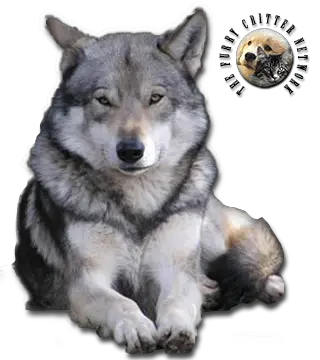Breed Standard
Head: Wolflike, well-balanced in relation to the rest of the body. Wide, flat skull. Slight stop. Broad muzzle. Black or liver nose, depending on the color of the coat. Tight-lipped jaws.
Ears: Medium size. Thick, pointed, held erect.
Eyes: Medium size, almond. Preferably yellow color.
Body: Powerful. Slightly longer than tall. Smooth, muscular neck. Ribs well sprung. Powerful, muscular rump. Slightly sloped croup. Straight, massive back.
Tail: At rest, carried in the shape of a saber.
Hair: Harsh and straight (in the shape of a baton). Thick, wooly undercoat.
Coat: Light to dark black (wolf gray), light to dark brown, cream to white. Any other color is a disqualification.
Size: Dog: 65 to 75 cm. (25.6-29.5 in).Bitch: 60 to 70 cm (23.6-27.5 in).
Weight: 30 to 35 kg (66-77 lb).
History
Leendert Saarloos (1884–1969) was a Dutch zoologist and dog breeder who believed that the German Shepherd had become too domesticated and wanted to breed back the more natural properties in order to derive a better working dog. In 1935, he bred a male German Shepherd (German: Deutscher Schaferhund, Dutch: Duitse herdershond) to a female Eurasian grey wolf (Canis lupus lupus) from Siberia. He then bred the offspring back with German Shepherds to derive a dog with one quarter wolf blood. The result was a dog that was not useful as a working dog but as companion that is close to nature. The Dutch Kennel Club recognized the breed in 1975. To honor its creator, they named this dog the "Saarloos Wolfdog". In 1981, the breed was recognized by the Federation Cynologique Internationale (FCI).
In 2015, a DNA study found that the Saarloos wolfdog showed more genetic association with the grey wolf than any other breed, which is in agreement with the documented historical crossbreeding with grey wolves in this breed. In 2016, a major DNA study of domestic dogs found a deep division between the Saarloos wolfdog and all other dogs, highlighting its descent from the crossing of German Shepherds with captive wolves in the 1930s. In 2019, a genomic study found that the amount of grey wolf ancestry possessed by the Saarloos wolfdog is 18–33% and the Czechoslovakian wolfdog 11–12%.
Behavior
This attentive, affectionate dog is reserved toward strangers. When with other dogs, his pack instinct is still strong. Independent and stubborn, this dog needs a handler capable of dominating him mentally without resorting to physical blows. It is vital to socialize this dog well during the first two years of his life.
The Saarloos Wolfhond is not suited for urban life. Even in the country, he needs regular walks. The coat does not require any special care.
Function
Guide Dog, Rescue Dog, Pet.
Health
The Dutch parent club for Saarloos wolfdogs researched possibilities to improve the breed's health by increasing genetic diversity. The first meetings with the Dutch kennel club were held in 2010. Following these meetings, Wageningen University and Research was asked to investigate the degree of interrelatedness of the population. The research was conducted by quantitative geneticist Dr. J.J. Windig and Dr. Ir M. Spies-Stoop. This study revealed that the population of Saarloos wolfdogs was very closely related. Without intervention, the degree of inbreeding would threaten the breed's survival. The scientists advised a controlled and extensive outcross program, to increase the breed's vitality, fertility and genetic variation. The Dutch kennel club approved the outcross program in 2012.
Two types of outcrosses are used in the outcross program. The first type is the use of so called 'look-alikes', which are dogs that resemble a Saarloos wolfdog, but that don't have a pedigree or that belong to a breed that isn't recognized by the FCI. The second type is the use of several FCI-recognized breeds. The breeds to be used are chosen by breed club members and agreed upon by majority vote. The procedure for both types of outcrosses is the same. The outcross is performed and the F1 generation is produced. The F1 is evaluated and fully health screened, and the best individuals are chosen to contribute to the next generation. This is done by breeding them back to purebred Saarloos wolfdogs, which produces the F2 generation. The F2 is again evaluated and health tested, and the best individuals are bred back to Saarloos wolfdogs to produce the F3 generation. The offspring of an F3 with a purebred Saarloos wolfdog (F4) will get an official pedigree and be recognized as a purebred. In order to maintain proper breed type, purebred breeding of Saarloos wolfdogs must continue alongside the outcross program.
As of January 2019, the following outcrosses have been performed:
White Swiss Shepherd (currently in the F3)
Siberian Husky (currently in the F2)
Ibizan Hound (currently in the F2)
Norwegian Elkhound (currently in the F3)
Look-alike Northern Inuit Dog (currently in the F3)






